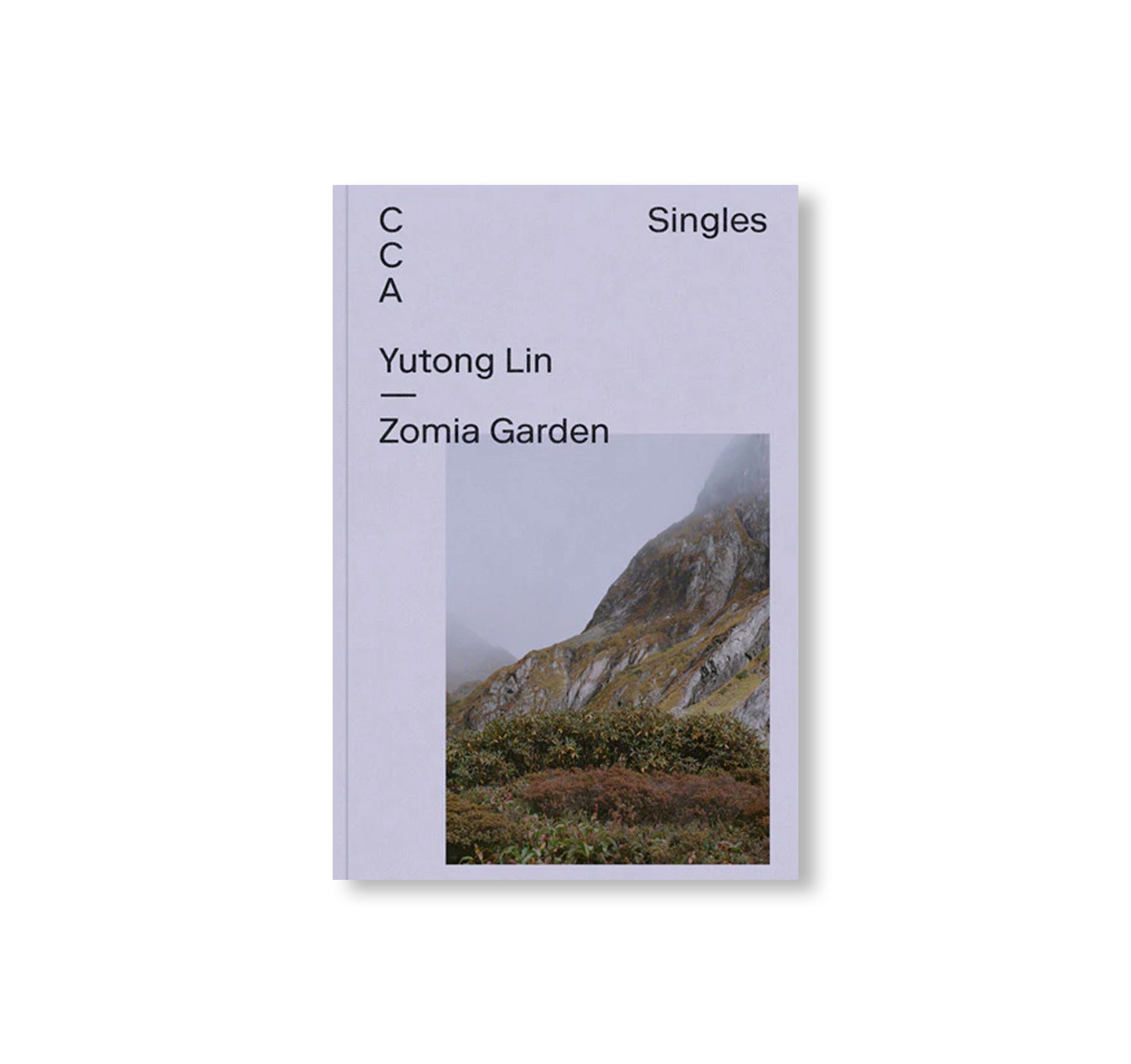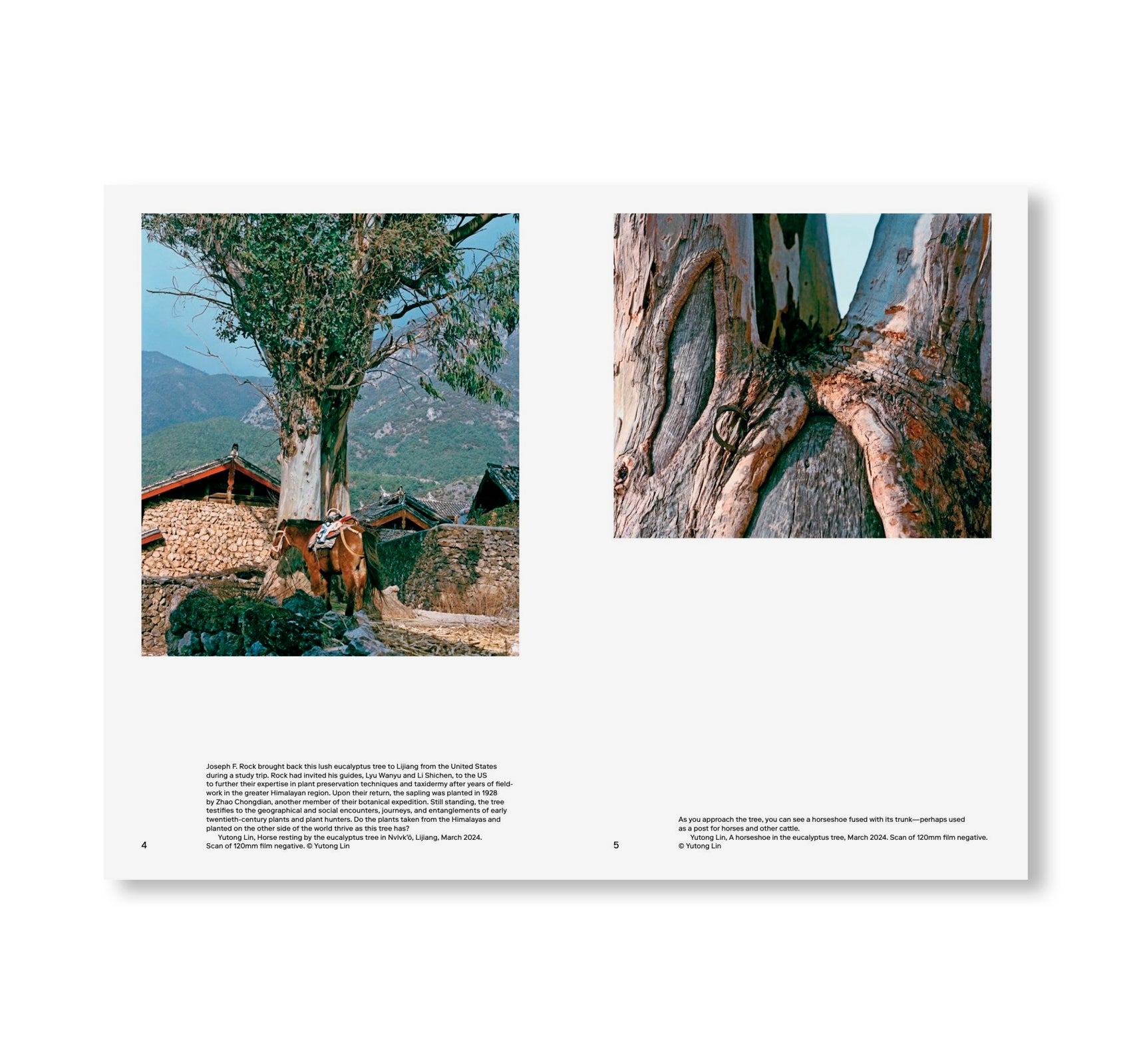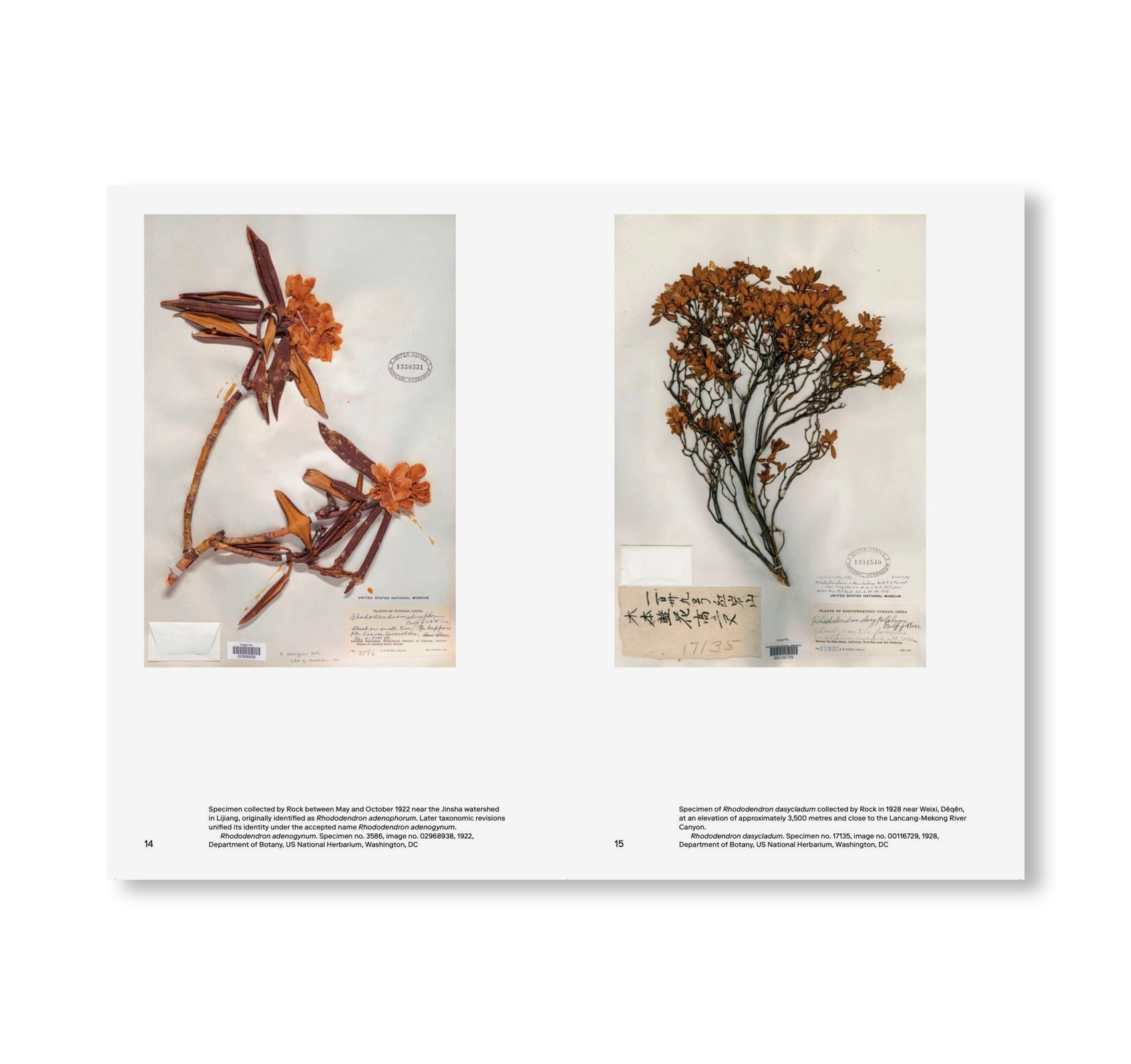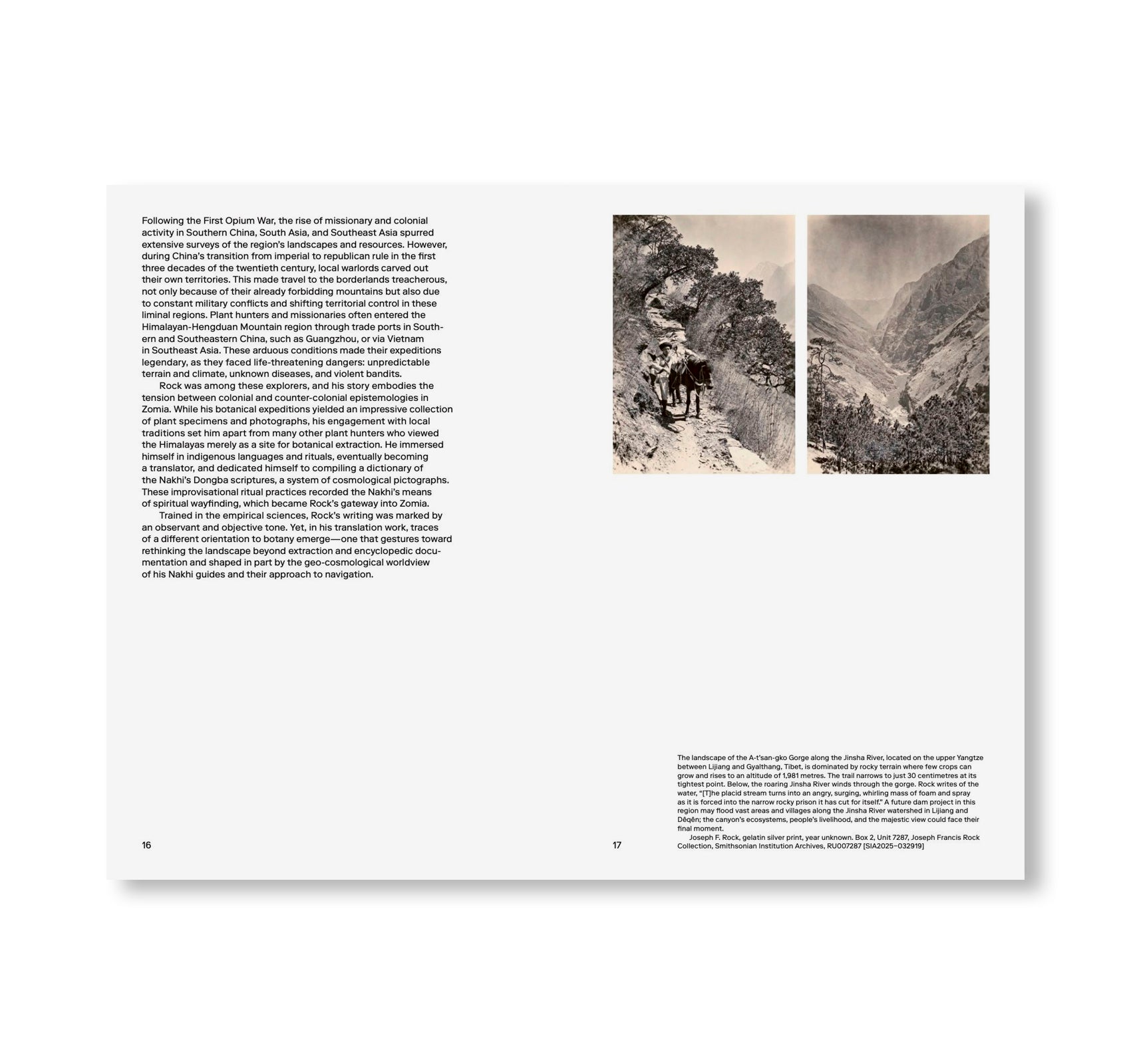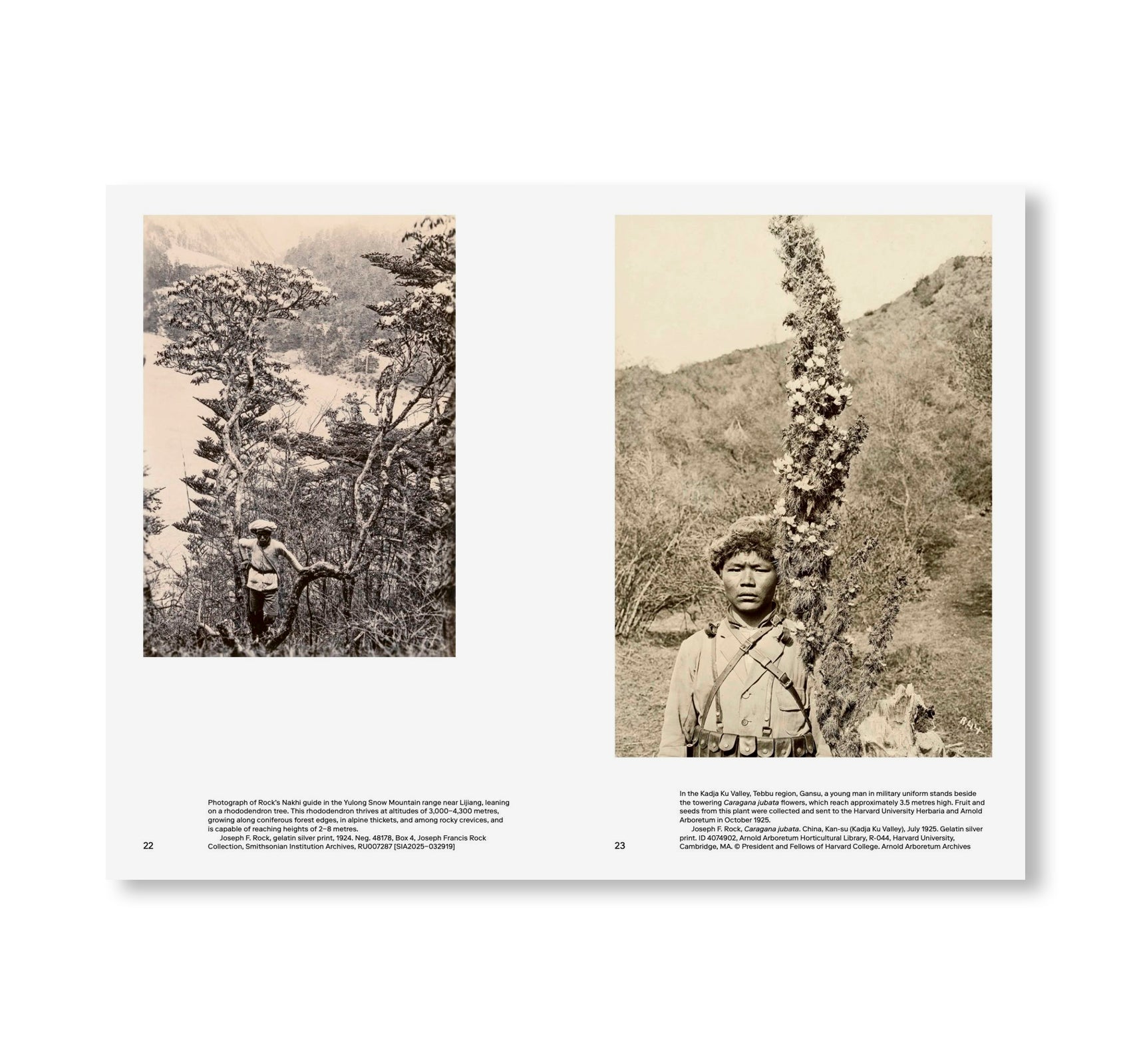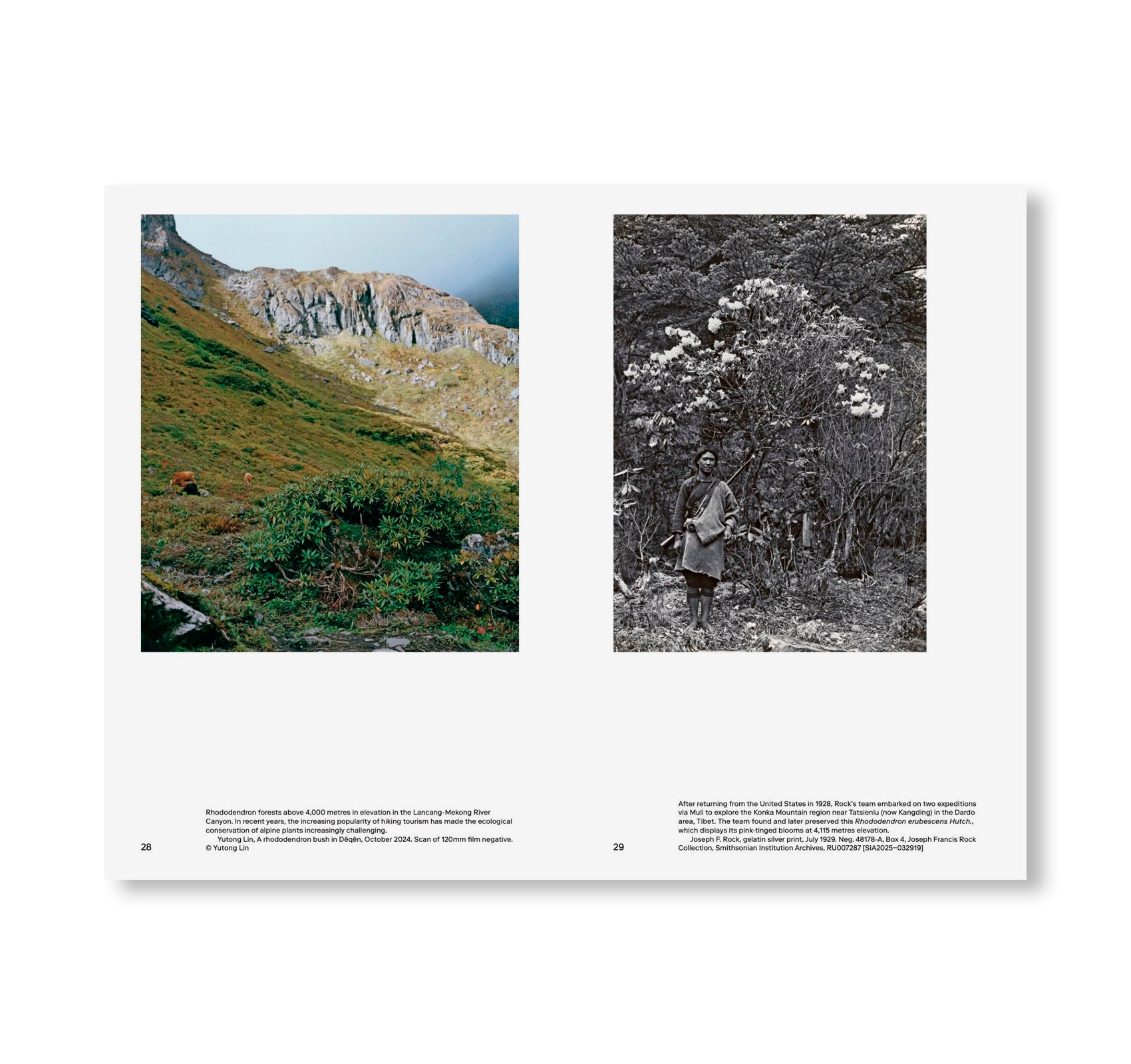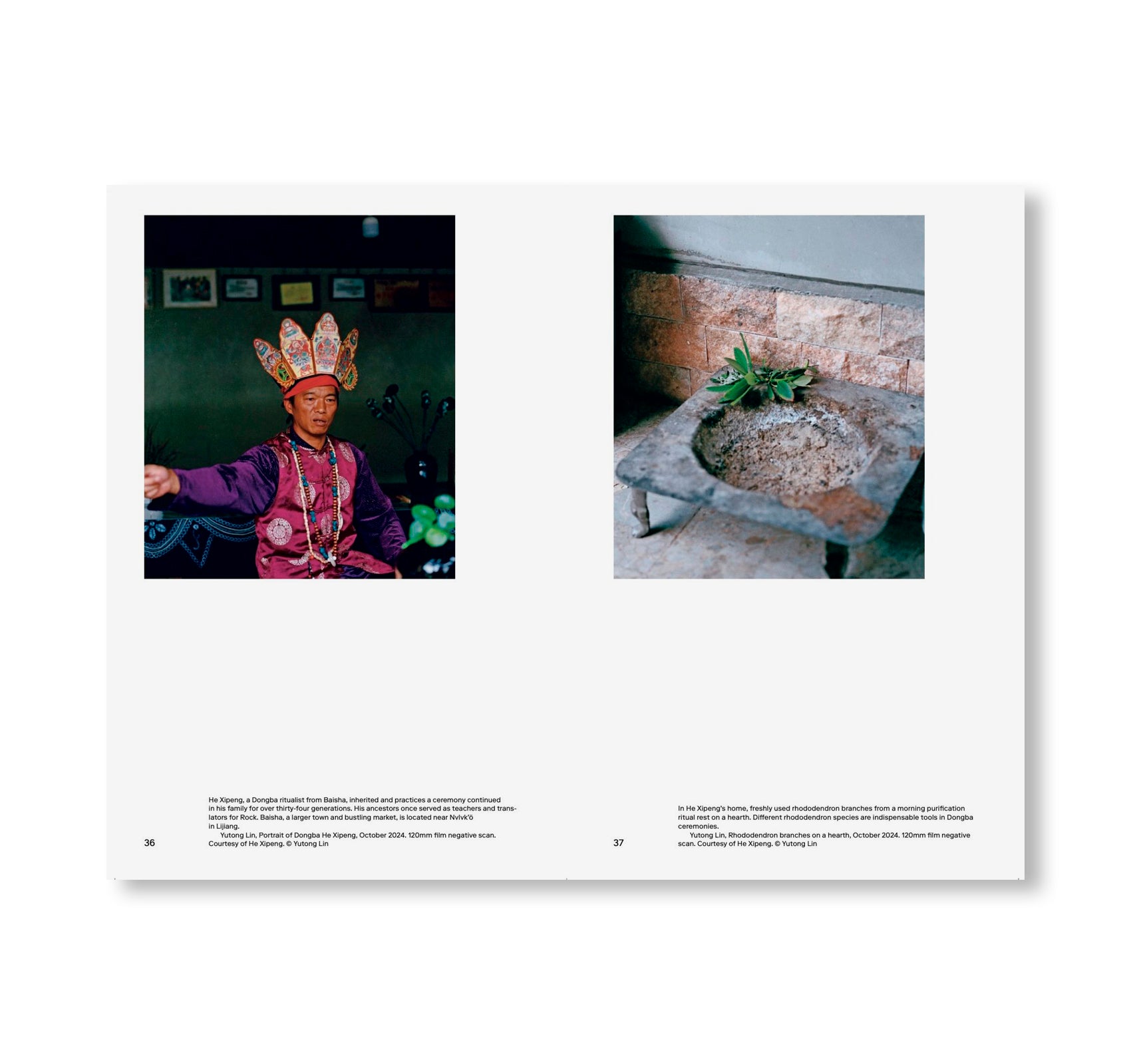ZOMIA GARDEN by Yutong Lin
モントリオールの建築ミュージアム、「CCA(Canadian Centre for Architecture、カナダ建築センターとも)」による「CCA Singles」シリーズの一冊。本書は、カナダ・モントリオールを拠点に活動する研究者、ユートン・リン(Yutong Lin)が手がける。
ヒマラヤ横断山脈帯の一角に位置するゾミア(Zomia)における植物探検の系譜をたどる本書。ゾミアは2002年に提唱された用語で、国民国家の統治を受けない最大の居住圏を指し、山地の複雑な地形や移動性、ゆるやかな自治の仕組みによって中央権力の直接支配が及びにくい広域として語られてきた。
作者は、出身地であるゾミアに戻り、20世紀初頭の植物採集家の旅程を追跡した。多様に変化するヒマラヤの地形は卓越した生物多様性を育み、豊穣な土地の神話的想像を長年にわたり誘発してきた。本書は、1920年代に活躍した植物採集家ジョセフ・ロック(Joseph Rock)に焦点を当てる。彼の植物学・景観・文化へのアプローチは、先住のナシ族(Nakhi)の案内人たち、およびその言語と儀礼との出会いによって変容した。作者は自身の写真と旅程をロックの功績と並置し、希少植物種と植物知の探究に織り込まれた植民地主義、神話生成、抵抗の歴史を解きほぐす。
In this volume of the CCA Singles series, Yutong Lin traces the legacy of botanical exploration in an area of the Himalaya-Hengduan Mountain chain known as Zomia, a term coined in 2002 to refer to the largest region of inhabitants not governed by a nation-state.
The book is a result of Lin’s participation in the CCA Emerging Curator program, which aims to take the institution’s curatorial work into unexplored territories.
Lin, an artist and curator, returned to the region—her hometown—to retrace the travels of early twentieth-century plant hunters. The variable Himalayan topographies sustain an extraordinary variety of flora and fauna and, over the years, have inspired mythical imaginaries of bountiful lands. Zomia Garden focuses on Joseph Rock, a famous plant hunter in the 1920s whose approach to botany, landscape, and culture was transformed by his encounters with Indigenous Nakhi guides and their language and rituals. Juxtaposing her photographs and itinerary alongside Rock’s, Lin untangles the histories of colonialism, mythmaking, and resistance woven into the hunt for rare plant species and botanical knowledge.
CCA Singles are short printed one-offs that present one voice, one object, or one event. Ranging from raw source material to edited topical reflections, they propose intimate contact with ideas generated or collected at the CCA.
